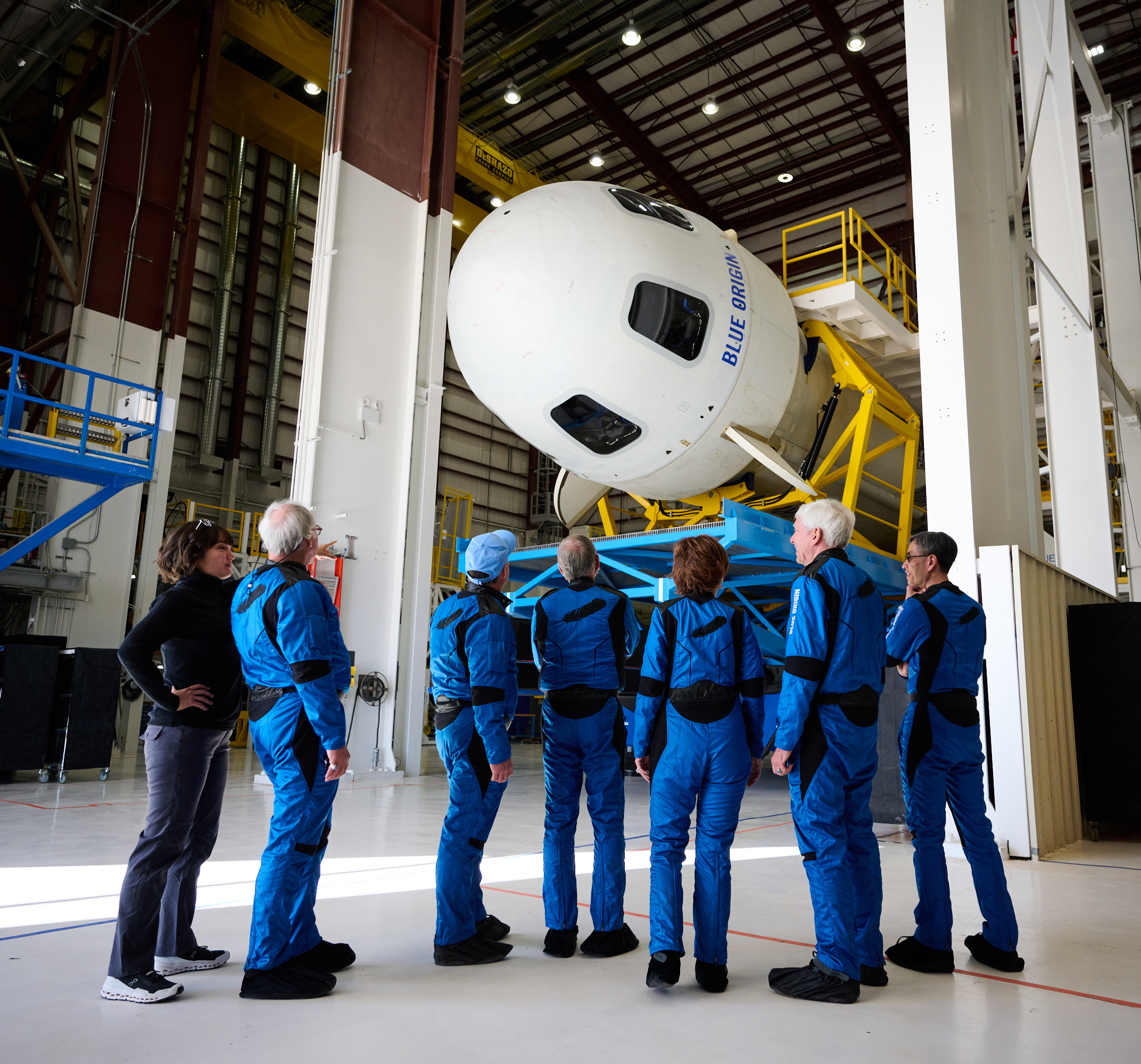
For the first time in 2022, and only the second time since the end of the Space Shuttle Program, six humans crossed the 62-mile-high (100-kilometer) “Kármán Line” together early Thursday, as Blue Origin’s venerable New Shepard booster smoothly executed its first suborbital “hop” of the year. Carrying “customers” Marty Allen, husband-and-wife duo Sharon and Marc Hagle, Jim Kitchen and George Nield, plus Gary Lai—Blue’s architect of the New Shepard system—the sextet took flight from desolate Launch Site One in the West Texas desert at 8:57:55 a.m. CDT.
This morning’s flight saw New Shepard reach a peak altitude of 347,285 feet (equivalent to 65.77 miles or 105.85 kilometers), whilst the Crew Capsule bearing Allen, Kitchen, Nield, the Hagles and Lai attained 347,629 feet (equivalent to 65.83 miles or 105.95 kilometers) at the top of its suborbital “arc”, before returning safely back to Earth and a parachute-assisted landing at 9:55:59 a.m. CDT, after a flight of ten minutes and four seconds.
Kent, Wash.-headquartered Blue Origin has now pushed its total number of humans launched to the edge of space in only eight months to 20, following last 20 July’s historic flight of founder Jeff Bezos and his brother Mark, together with teenager Oliver Daemen and 82-year-old “Mercury 13” aviator Wally Funk. That flight, designated “NS-16” saw the youngest (Daemen) and oldest (Funk) people in history ever to be lifted beyond the Kármán Line, the altitude almost universally acknowledged as the “edge” of space.
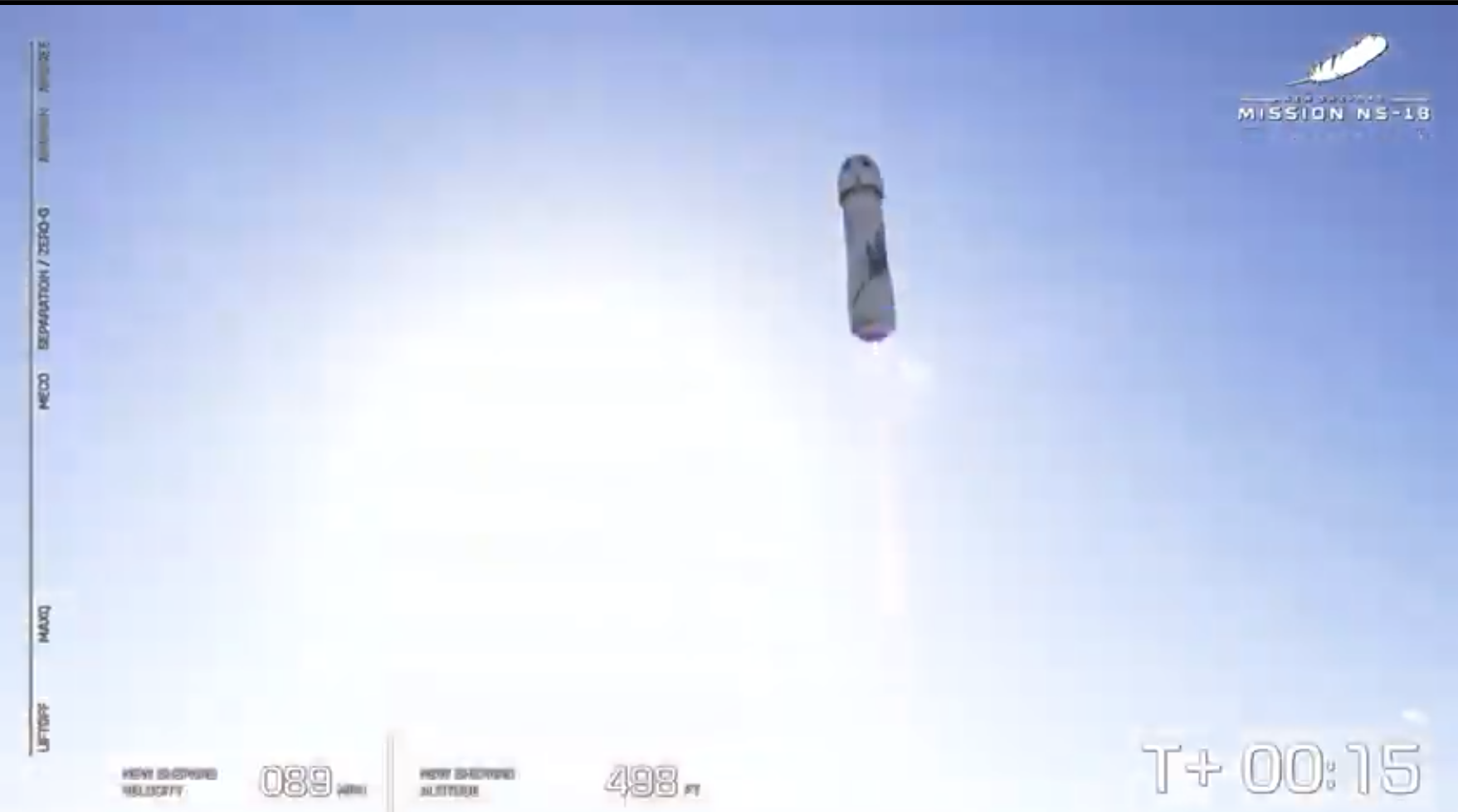
More recently, last 13 October, a second crew-carrying launch (NS-18) ferried Blue’s vice president of mission and flight operations, Audrey Powers, together with Star Trek veteran William Shatner—“Captain Kirk” himself—and entrepreneurs Chris Boshuizen and Glen de Vries. Aged 90 at the time of the flight, Shatner snatched Funk’s record for the oldest human ever to enter space, an accolade he holds to this day.
Triumph, however, was harshly juxtaposed with tragedy, when de Vries tragically lost his life a few weeks later in a light aircraft accident. When the next New Shepard crew (NS-19) launched last 11 December, its crew patch honored de Vries, with his initials “GDV” in pride of place. And the NS-20 crew—Voyager Space CEO Dylan Taylor, engineer and investor Evan Dick, Bess Technologies founder Lane Bess, and his son Cameron, together with GMA co-anchor Michael Strahan and Laura Shepard-Churchley, daughter of America’s first astronaut, Al Shepard—became the first crew of six to cross the Kármán Line aboard the same spacecraft since the twilight of the shuttle era in early 2011.
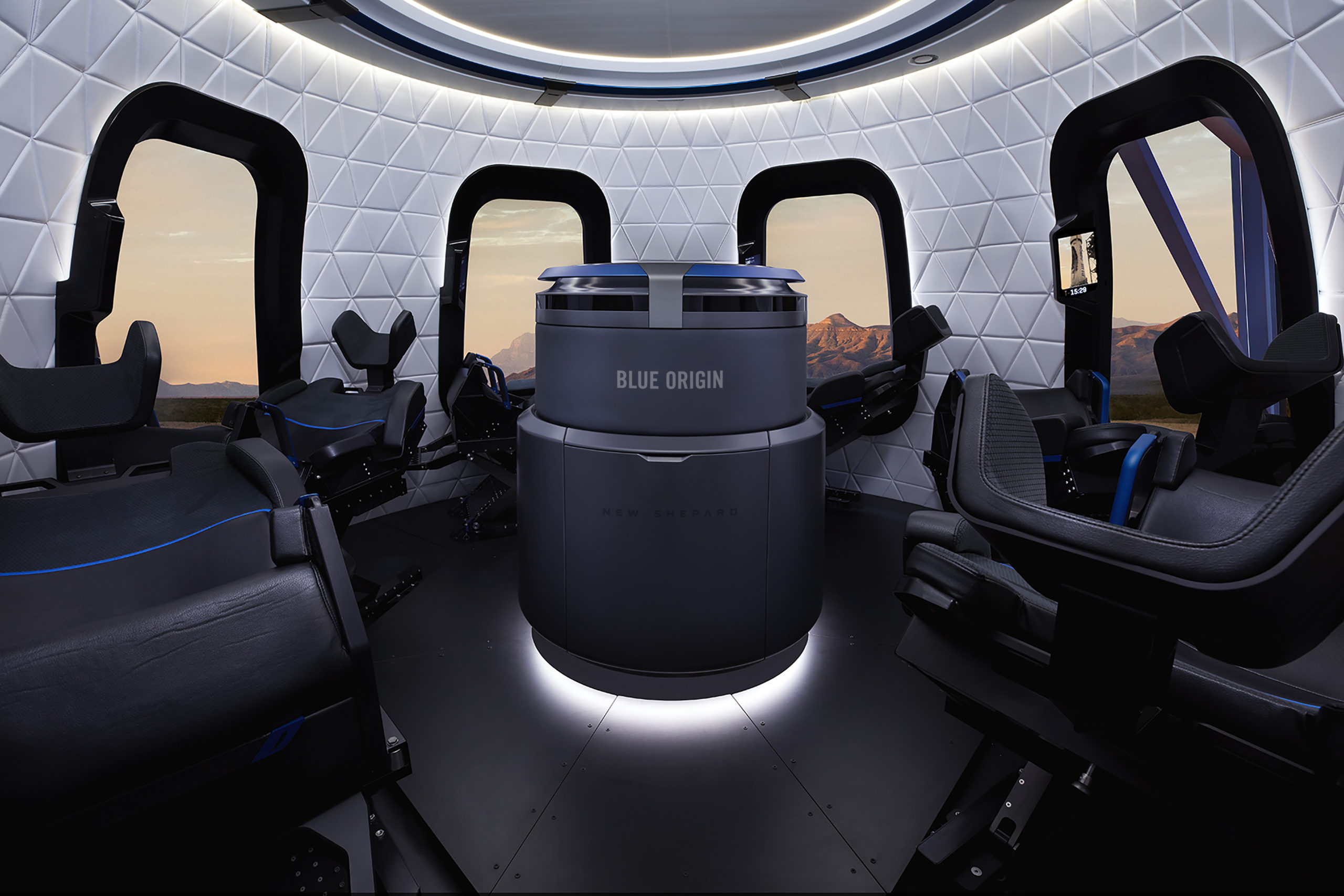
Two weeks ago, Blue announced plans for the next crewed flight, NS-20, with an expectation that it would launch as early as 23 March. The six-person crew line-up included angel investor and Party America retail magnate Marty Allen; teacher, entrepreneur and “world” explorer Jim Kitchen; and husband-and-wife duo Sharon and Marc Hagle. She is founder of the SpaceKids Global non-profit organization with a mission to inspire students to excel in STEAM+ education, whilst he is president and CEO of the Tricolor International residential and commercial property development corporation.
Rounding out the NS-20 crew—who wryly dubbed themselves “The Roaring Twenties”—was George Nield, one-time associate administrator of the Federal Aviation Administration’s (FAA) Office of Commercial Space Transportation and now president of Commercial Space Technologies. And the sixth seat aboard New Shepard’s Crew Capsule was originally assigned to “guest” Pete Davidson, of Saturday Night Live. However, within days of the announcement, Davidson was pulled from the crew, with no explanation from Blue Origin, save that the comedian was “no longer able” to join NS-20.
Davidson, however, has become a figure of some controversy in recent months, not least in light of his relationship with Kim Kardashian and a very public spat earlier this spring with the rapper Kanye West.
In his place, on 21 March Blue identified Gary Lai to occupy the sixth seat. Lai joined Blue as one of the organization’s first 20 employees, way back in March 2004, and is currently senior director and chief architect for New Shepard. Just last April, Lai and three other Blue colleagues participated in ingress/egress exercises from the New Shepard Crew Capsule before launch and after landing of the uncrewed NS-15 mission.
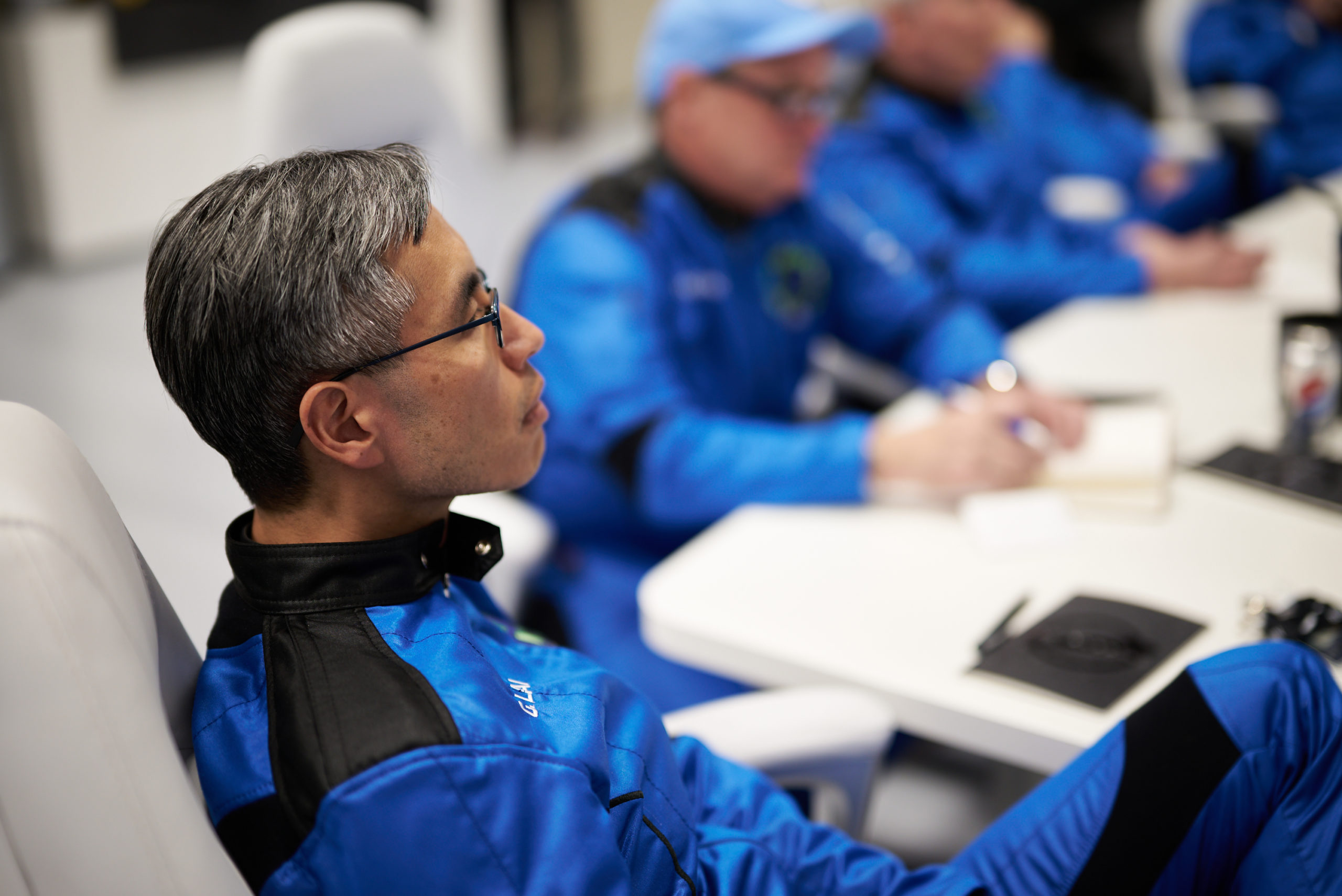
By the time that Lai joined the NS-20 crew, the launch had slipped to no sooner than Tuesday, 29 March. It subsequently moved again to Thursday 31st, in response to forecasted high winds during the launch and recovery operations on both Tuesday and Wednesday. “The team has completed Flight Readiness Review and confirmed the vehicle has met all mission requirements for flight,” Blue reported on Monday. “Astronauts are completing their training and weather remains as the only gating factor.”
In comments provided earlier this week, NS-20 Flight Director Nick Patrick—a former NASA astronaut who flew two shuttle missions in December 2006 and February 2010—outlined the challenges of running Blue’s launch crew from three days before launch until the day after the flight. Describing the NS-20 crew as an “interesting group of people”, Patrick pointed to the successful FRR as having taken place last Sunday and gave some insight into the New Shepard “launch windows”, which are typically limited to no earlier than sunrise and no later than midmorning, as temperatures in the desert begin to increase.
The NS-20 crew arrived at Blue’s Astronaut Village in West Texas last weekend and Kitchen described training as both “surreal” and “exhaustive”. It also emphasised educational outreach. “We had an opportunity to draw pictures of our vision for the future of life in space,” tweeted Nield on 27 March. “Those pictures will be flown on-board the capsule as part of Blue Origin’s Club for the Future.” Nield’s desire to undertake a suborbital spaceflight was simple: “To see black sky and the curvature of the Earth,” he tweeted, “and to experience the “magic” of weightlessness.”
And some of that magic transplanted itself into the NS-20 crew patch. It includes an orbital ring to honor Nield’s earlier career at Orbital Sciences Corp., where he was a senior scientist in the Advanced Programs Group, and Kitchen’s work to promote Low-Earth Orbit (LEO) spaceflight. A sailboat icon on the patch offers a tip of the hat to Allen’s passion for sailing and paw prints and dots honor the Hagles’ dogs and commemorate their 26th wedding anniversary. Finally, a star, positioned over Kent, Wash., points to Blue’s headquarters, where Lai’s team has labored on New Shepard for almost two decades.
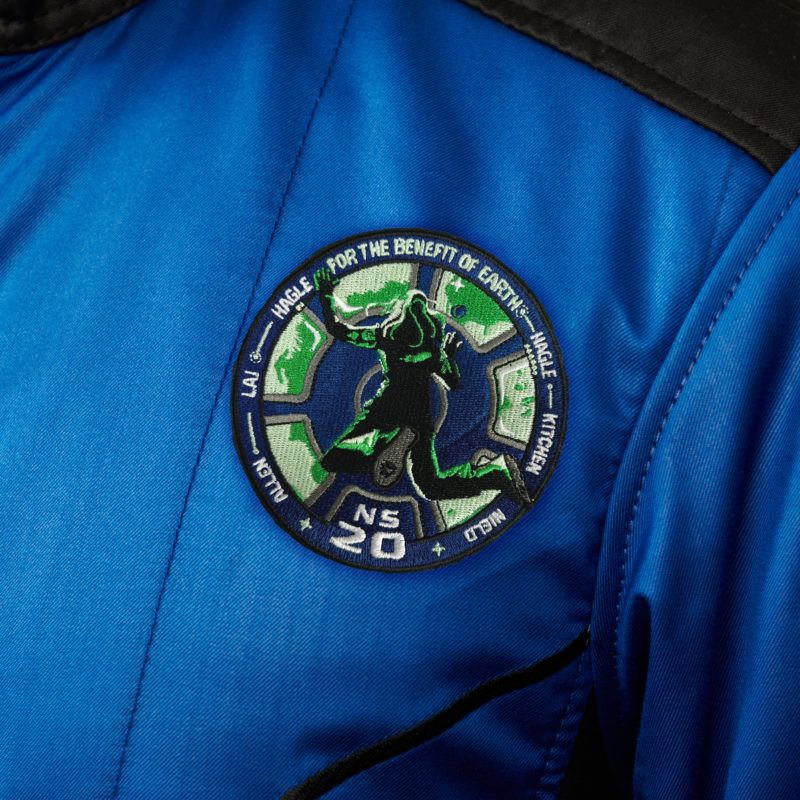
Flying the Crew Capsule uphill today was the NS4 booster, which logged its sixth launch after being introduced as the fourth iteration of the New Shepard fleet in January 2021. On its first outing, NS4 trialed speakers, microphones, a crew alert system and push-to-talk buttons, as well as cushioned wall-linings and sound suppression gear. She flew again mid-April, during which crew members (including Lai) rehearsed pre-launch ingress and post-landing egress procedures. But the real deal for NS4 came last July, October, December and earlier today, when she lifted 20 humans past the Kármán Line.
The 59-foot-tall (18-meter) NS4 booster was transported two miles (3.2 kilometers) from its assembly facility, nicknamed “The Barn”, out to Launch Site One, about 7.5 hours prior to liftoff. The process of loading liquid oxygen and hydrogen propellants got underway at T-3 hours. And at T-45 minutes, Kitchen, Allen, Lai, Nield and the Hagles boarded their Rivian trucks for the trip to the pad. Clad in their bright blue suits, they ascended four flights of stairs to the top of the gantry, where the Tower Operations Team and Crew Member No. 7 Sarah Knights assisted them into the Crew Capsule.
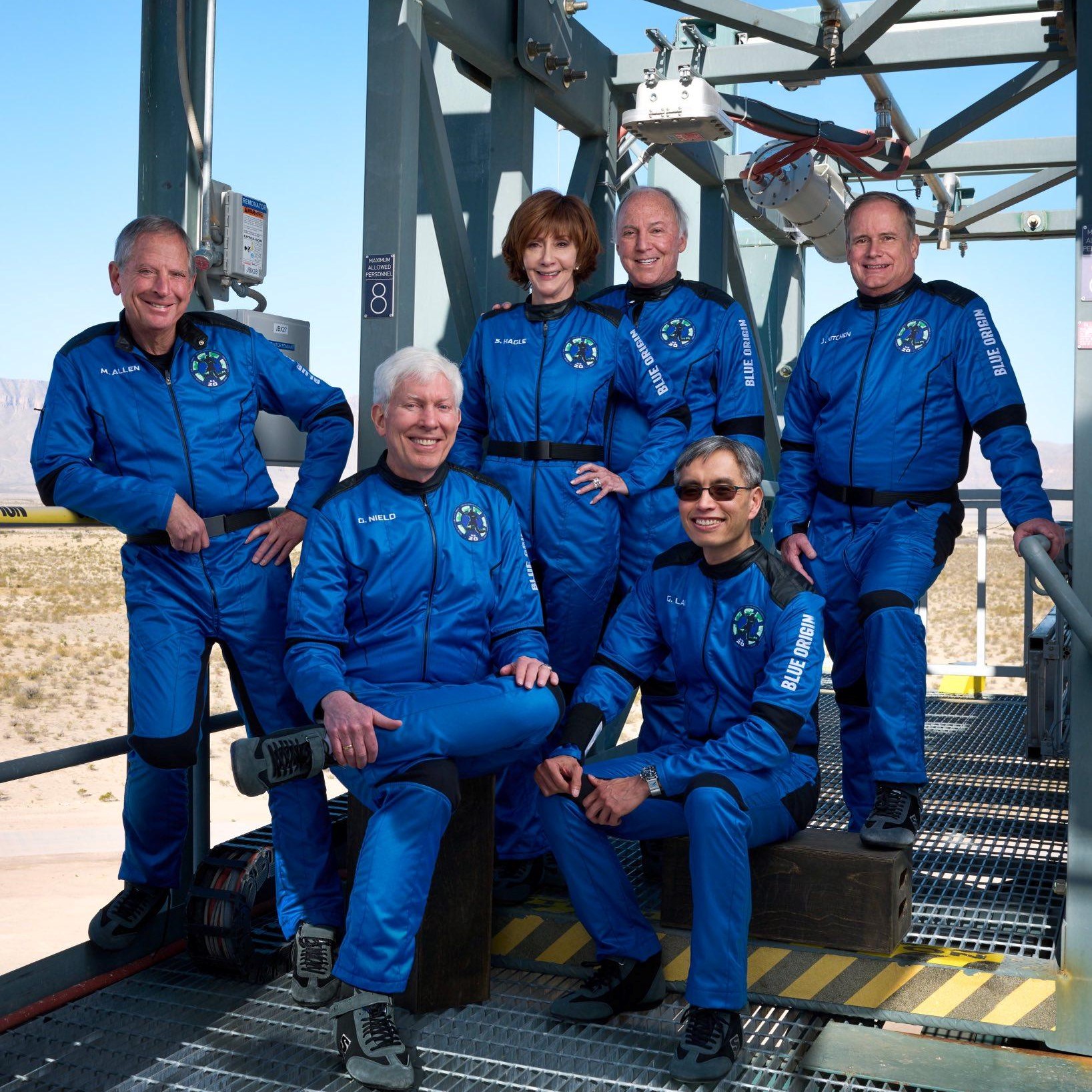
In the final minutes, the crew received words of encouragement from earlier New Shepard flyers, including Laura Shepard-Churchley, who described the ride as faster than the fastest sports car she could imagine. She told them to “have a blast” and challenged them to try—just try—to lift their arms from the arm-rests during the 6G descent.
After a brief hold in the countdown at just inside T-10 minutes, clocks resumed counting. The gantry retracted away from the vehicle at T-2 minutes and a surprisingly quiet countdown was suddenly broken by the transition to Internal Guidance at T-16 seconds and the call to “Command Engine Start” at T-4 seconds. With a thrust of 110,000 pounds (50,000 kilograms), New Shepard’s powerful BE-3 engine roared to life and commenced a fast climb away from the West Texas desert.
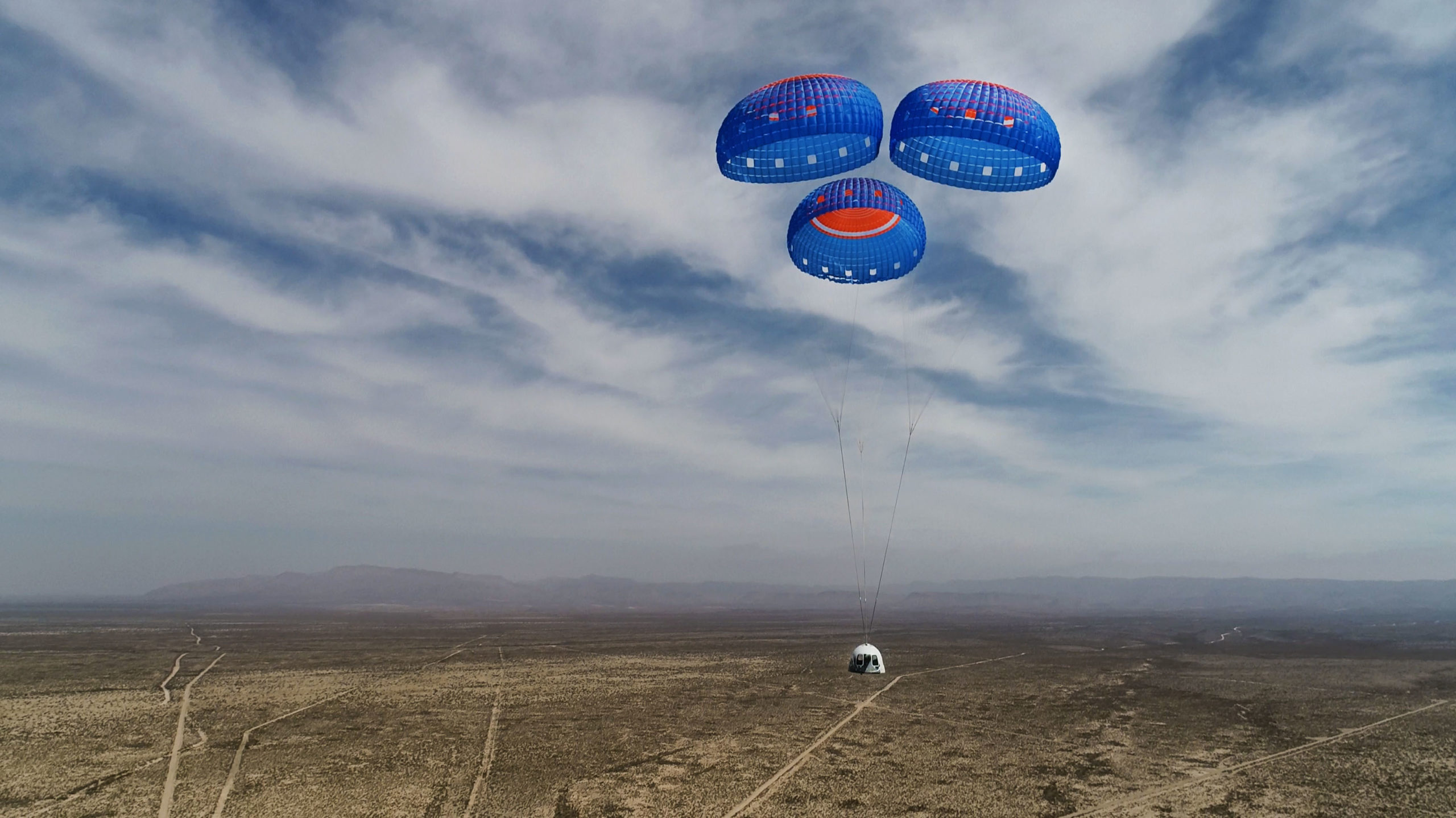
The vehicle passed “Max Q”, the phase of maximum aerodynamic turbulence on the airframe, about 50 seconds later and the BE-3 shut down at two minutes and 20 seconds, by which time the stack had reached an altitude of just over 200,000 feet, equivalent to more than 37 miles or 60 kilometers. Shortly afterwards, NS4 and the Crew Capsule parted company and the booster began its descent back to Earth, announcing its arrival with a trademark sonic boom, then touching down smoothly on its landing pad at seven minutes and 25 seconds.
Meanwhile, the Crew Capsule continued to coast upwards to an apogee of 347,629 feet (equivalent to 65.83 miles or 105.95 kilometers). Kitchen, Allen, Lai, Nield and the Hagles logged three to four minutes of weightlessness before heading back home. Descending beneath three beautiful red-and-blue parachutes, the Crew Capsule touched down at 9:55:59 a.m. CST at T+10 minutes and four seconds. Peak ascent velocity was 2,236 miles per hour (3,599 kilometers per hour).




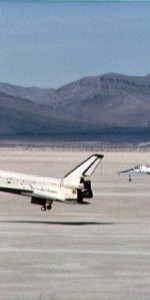
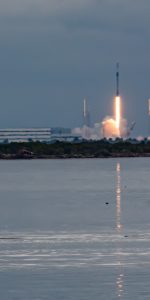
One Comment
One Ping
Pingback:NS-21 Launches Six Humans to Space, Including New Shepard’s First Repeat Flyer - AmericaSpace